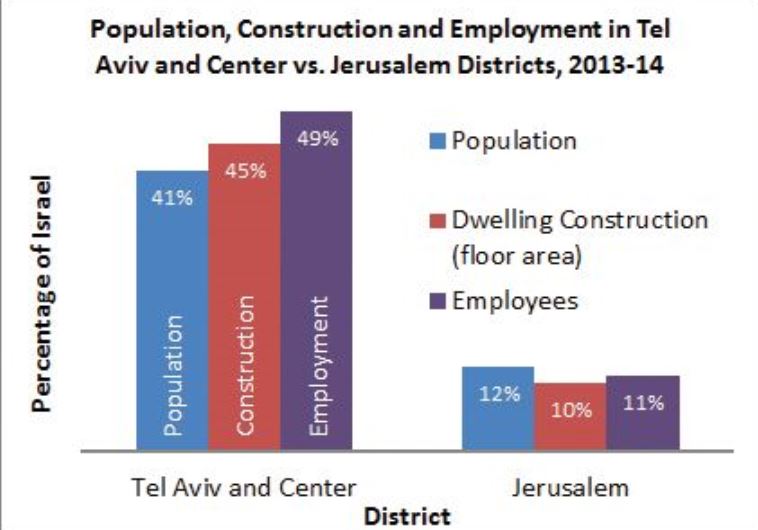It all happens in the Center
The Tel Aviv and Gush Dan districts (the Center) combined are home to 3.3 million residents, or 41 percent of the country’s population.
 Population, construction and employment in Tel Aviv and center vs. Jerusalem districts, 2013-14
Population, construction and employment in Tel Aviv and center vs. Jerusalem districts, 2013-14